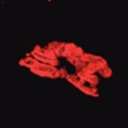Spatio-temporal distribution of dengue and lymphatic filariasis vectors along an altitudinal transect in Central Nepal.
कीवर्ड
सार
BACKGROUND
Rapidly increasing temperatures in the mountain region of Nepal and recent reports of dengue fever and lymphatic filariasis cases from mountainous areas of central Nepal prompted us to study the spatio-temporal distribution of the vectors of these two diseases along an altitudinal transect in central Nepal.
RESULTS
We conducted a longitudinal study in four distinct physiographical regions of central Nepal from September 2011 to February 2012. We used BG-Sentinel and CDC light traps to capture adult mosquitoes. We found the geographical distribution of the dengue virus vectors Aedes aegypti and Aedes albopictus along our study transect to extend up to 1,310 m altitude in the Middle Mountain region (Kathmandu). The distribution of the lymphatic filariasis vector Culex quinquefasciatus extended up to at least 2,100 m in the High Mountain region (Dhunche). Statistical analysis showed a significant effect of the physiographical region and month of collection on the abundance of A. aegypti and C. quinquefasciatus only. BG-Sentinel traps captured significantly higher numbers of A. aegypti than CDC light traps. The meteorological factors temperature, rainfall and relative humidity had significant effects on the mean number of A. aegypti per BG-Sentinel trap. Temperature and relative humidity were significant predictors of the number of C. quinquefasciatus per CDC light trap. Dengue fever and lymphatic filariasis cases had previously been reported from all vector positive areas except Dhunche which was free of known lymphatic filariasis cases.
CONCLUSIONS
We conclude that dengue virus vectors have already established stable populations up to the Middle Mountains of Nepal, supporting previous studies, and report for the first time the distribution of lymphatic filariasis vectors up to the High Mountain region of this country. The findings of our study should contribute to a better planning and scaling-up of mosquito-borne disease control programmes in the mountainous areas of Nepal.



